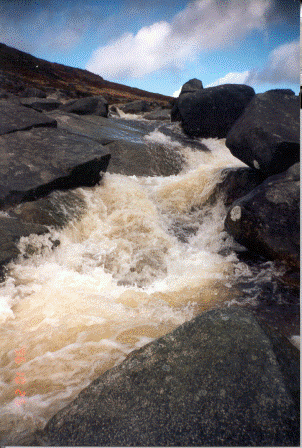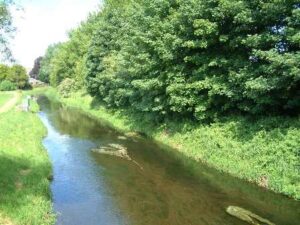Freshwater resources form an essential part of our landscape and provide a range of habitats supporting a wealth of wildlife including fish, birds and invertebrates. They are essential to Ireland’s biodiversity. Freshwater biodiversity is vulnerable as freshwater is a resource for humans that may be extracted, diverted, contained or contaminated in ways that compromise its value as a habitat for organisms.
There are over 11,000 lakes in Ireland located primarily in the midlands, west and northwest. Together rivers and lakes comprise nearly 1,500 km. There are a number of different types of lakes in Ireland each with their own characteristic species and habitats. The classification of lakes is generally based on the trophic or nutrient status of the water. Typical lakes species include pondweed, a variety of lilies and mosses. Our most interesting type of lake is probably the turlough, which is practically unique to Ireland occurring mainly in the west. This is a seasonal lake in basins or depressions in limestone areas and supports a wide variety of aquatic, amphibious and terrestrial species.
Rivers can be divided into two types of river – upland and lowland. Common plant species found in rivers include aquatic mosses, lichens, liverworts mainly in upland rivers while lowland rivers have such species as waterlillies and reeds. Ireland’s rivers support a variety of fish including salmon, trout and pike. Birds that can be seen on the river verges include kingfishers and herons.
Overall, our water quality is good, which means there is a diverse range in the flora and fauna present in our freshwater systems. However, there are a number of pressures that have been identified as having an adverse effect on our rivers and lakes. These include enrichment of watercourses with nutrients such as nitrogen and phosphorous from agriculture activities and inefficient waste water treatment mainly in the form of septic tanks. Nutrient enrichment (or eutrophication) of water leads to an over growth of algae and aquatic plants, which in turn cause a depletion of oxygen in the water, leaving it unable to sustain other forms of life.
Other threats to the biodiversity of Ireland’s freshwaters include:
- changes in land use e.g. clearing of land or planting of coniferous trees which may increase the acidity of the water and increase siltation; and
- The introduction of non-indigenous species e.g. zebra mussel which has caused serious problems for some fish since it was introduce here.
For more information of Freshwaters including types of freshwater systems in Ireland, interesting and rare species associated with freshwaters, threats to freshwaters and the legislation that protects them download Freshwater Factsheet


